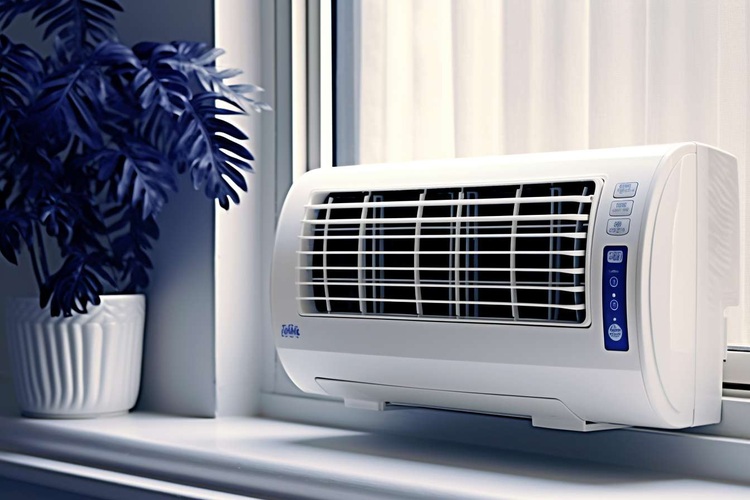Portable Air Conditioners: A Flexible Way to Cool Your Home
Portable air conditioners offer a versatile solution for maintaining comfort in various living spaces. These compact units provide cooling without the need for permanent installation, making them ideal for renters, homeowners with limited window access, or those seeking supplemental cooling in specific areas. As temperatures rise and energy efficiency becomes increasingly important, understanding the functionality, benefits, and considerations of portable air conditioners can help you make an informed decision about your cooling needs.

How Does a Portable Air Conditioner Work?
Portable air conditioners operate on a similar principle to traditional window units but with a self-contained design. The unit draws warm air from the room, passes it over refrigerant-cooled coils, and then expels the cooled air back into the space. Meanwhile, the heat extracted from the air is vented outside through a flexible hose, typically connected to a window kit. This process not only cools the air but also helps dehumidify it, contributing to overall comfort.
The internal components of a portable air conditioner include a compressor, condenser coils, evaporator coils, and a fan. As the refrigerant circulates through these components, it changes from a liquid to a gas and back again, facilitating the heat exchange process. This cycle continues as long as the unit is in operation, maintaining the desired temperature set by the user.
Key Advantages and Possible Limitations of Portable ACs
Portable air conditioners offer several benefits that make them attractive for certain situations. Their mobility allows users to move cooling power from room to room as needed, providing flexibility that fixed units cannot match. Installation is typically straightforward, requiring only a nearby electrical outlet and a way to vent hot air, usually through a window. This makes them particularly suitable for temporary cooling solutions or for use in buildings where permanent modifications are not allowed.
However, portable units do have some limitations. They generally have a lower cooling capacity compared to central air conditioning systems or window units of similar size. The need for venting can also reduce efficiency, as some warm air may leak back into the room around the exhaust hose. Additionally, portable air conditioners can be noisier than other cooling options due to having all components, including the compressor, inside the living space.
Features to Consider Before Buying a Portable Air Conditioner
When shopping for a portable air conditioner, several key features should be evaluated to ensure you select the most suitable unit for your needs:
-
Cooling capacity: Measured in BTUs (British Thermal Units), this indicates the unit’s ability to cool a given space. Match the BTU rating to your room size for optimal efficiency.
-
Energy efficiency: Look for units with higher Energy Efficiency Ratio (EER) ratings to minimize electricity consumption and operating costs.
-
Dehumidification capabilities: Some models offer enhanced moisture removal, which can be particularly beneficial in humid climates.
-
Noise level: Check the decibel rating, especially if the unit will be used in bedrooms or quiet work areas.
-
Programmable settings: Features like timers, sleep modes, and remote controls can enhance convenience and energy savings.
-
Portability: Consider the unit’s weight and the presence of wheels for easy movement between rooms.
Comparison of Popular Portable AC Models
When evaluating portable air conditioners, it’s helpful to compare different models to find the one that best suits your needs. Here’s a comparison of some popular portable AC units:
| Model | Cooling Capacity (BTU) | Coverage Area (sq ft) | Key Features | Estimated Price |
|---|---|---|---|---|
| Whynter ARC-14S | 14,000 | 500 | Dual hose system, Dehumidifier mode | $450 - $550 |
| LG LP1419IVSM | 14,000 | 500 | Inverter compressor, Wi-Fi connectivity | $600 - $700 |
| Honeywell HL14CESWK | 14,000 | 550 | Thermal overload protection, Washable filter | $500 - $600 |
| Black+Decker BPACT14WT | 14,000 | 350 | 24-hour timer, Sleep mode | $350 - $450 |
| Frigidaire FHPC132AB1 | 13,000 | 550 | 3-in-1 functionality, Wi-Fi control | $500 - $600 |
Prices, rates, or cost estimates mentioned in this article are based on the latest available information but may change over time. Independent research is advised before making financial decisions.
When comparing models, consider factors such as cooling capacity, energy efficiency, and special features that align with your specific needs. Keep in mind that higher BTU ratings generally correlate with larger coverage areas and potentially higher energy consumption.
Portable air conditioners offer a flexible cooling solution for various living situations. By understanding how they work, their advantages and limitations, and the key features to consider, you can make an informed decision when choosing a unit. While they may not replace central air conditioning systems in terms of overall cooling power, portable ACs provide a valuable option for targeted cooling, temporary installations, or supplemental use in specific areas of your home.




